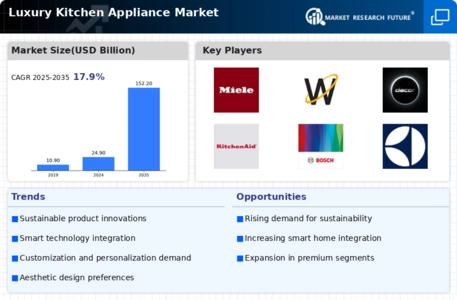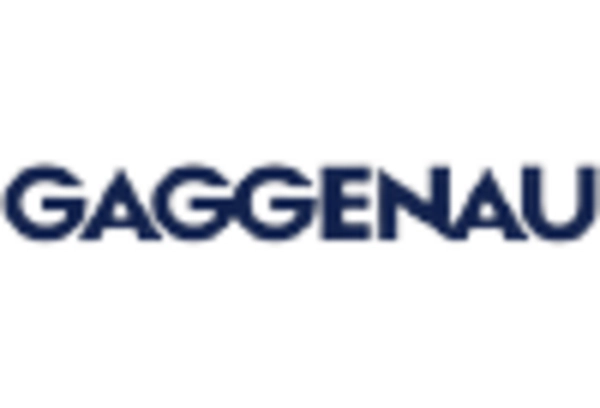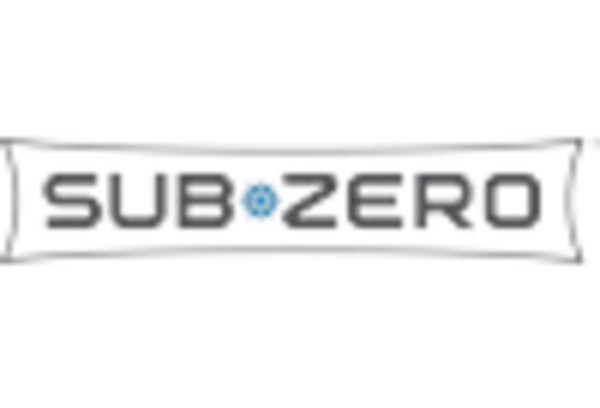The Luxury Kitchen Appliance Market is currently characterized by a dynamic competitive landscape, driven by innovation, sustainability, and a growing consumer preference for high-end, technologically advanced products. Key players such as Sub-Zero (US), Miele (DE), and Gaggenau (DE) are strategically positioned to leverage these trends. Sub-Zero (US) focuses on premium refrigeration solutions, emphasizing energy efficiency and smart technology, while Miele (DE) is renowned for its commitment to quality and durability, often integrating advanced features into its appliances. Gaggenau (DE), on the other hand, targets the luxury segment with bespoke kitchen solutions, enhancing its brand prestige through exclusive partnerships and limited-edition releases. Collectively, these strategies foster a competitive environment that prioritizes innovation and premium customer experiences.
In terms of business tactics, companies are increasingly localizing manufacturing to reduce lead times and enhance supply chain efficiency. This approach appears to be particularly relevant in the context of rising global logistics costs. The market structure is moderately fragmented, with several key players holding substantial market shares, yet numerous smaller brands also contribute to the diversity of offerings. The collective influence of these major players shapes market dynamics, as they set trends that smaller companies often follow.
In August 2025, Sub-Zero (US) announced the launch of its new line of smart refrigerators, which integrate AI technology to optimize food preservation and energy consumption. This strategic move not only aligns with the growing consumer demand for smart home solutions but also reinforces Sub-Zero's position as a leader in innovation within the luxury segment. The introduction of such advanced features is likely to attract tech-savvy consumers who prioritize sustainability and efficiency in their kitchen appliances.
In September 2025, Miele (DE) unveiled its latest range of built-in ovens that feature enhanced connectivity options, allowing users to control their appliances remotely via a dedicated app. This development underscores Miele's commitment to digital transformation and positions the brand favorably in a market increasingly driven by smart technology. By enhancing user convenience and integrating modern technology, Miele aims to solidify its reputation for quality and innovation.
In July 2025, Gaggenau (DE) entered a strategic partnership with a renowned culinary school to develop a series of exclusive cooking classes that showcase its appliances. This initiative not only elevates the brand's visibility among culinary enthusiasts but also reinforces its image as a premium choice for serious cooks. Such experiential marketing strategies are likely to deepen customer engagement and loyalty, further differentiating Gaggenau in a competitive market.
As of October 2025, the Luxury Kitchen Appliance Market is witnessing a pronounced shift towards digitalization, sustainability, and AI integration. These trends are reshaping competitive dynamics, as companies increasingly form strategic alliances to enhance their technological capabilities and market reach. The focus appears to be shifting from price-based competition to differentiation through innovation and reliability in supply chains. Looking ahead, it seems that the competitive landscape will continue to evolve, with brands that prioritize technological advancements and sustainable practices likely to emerge as leaders in this premium market.

















Leave a Comment